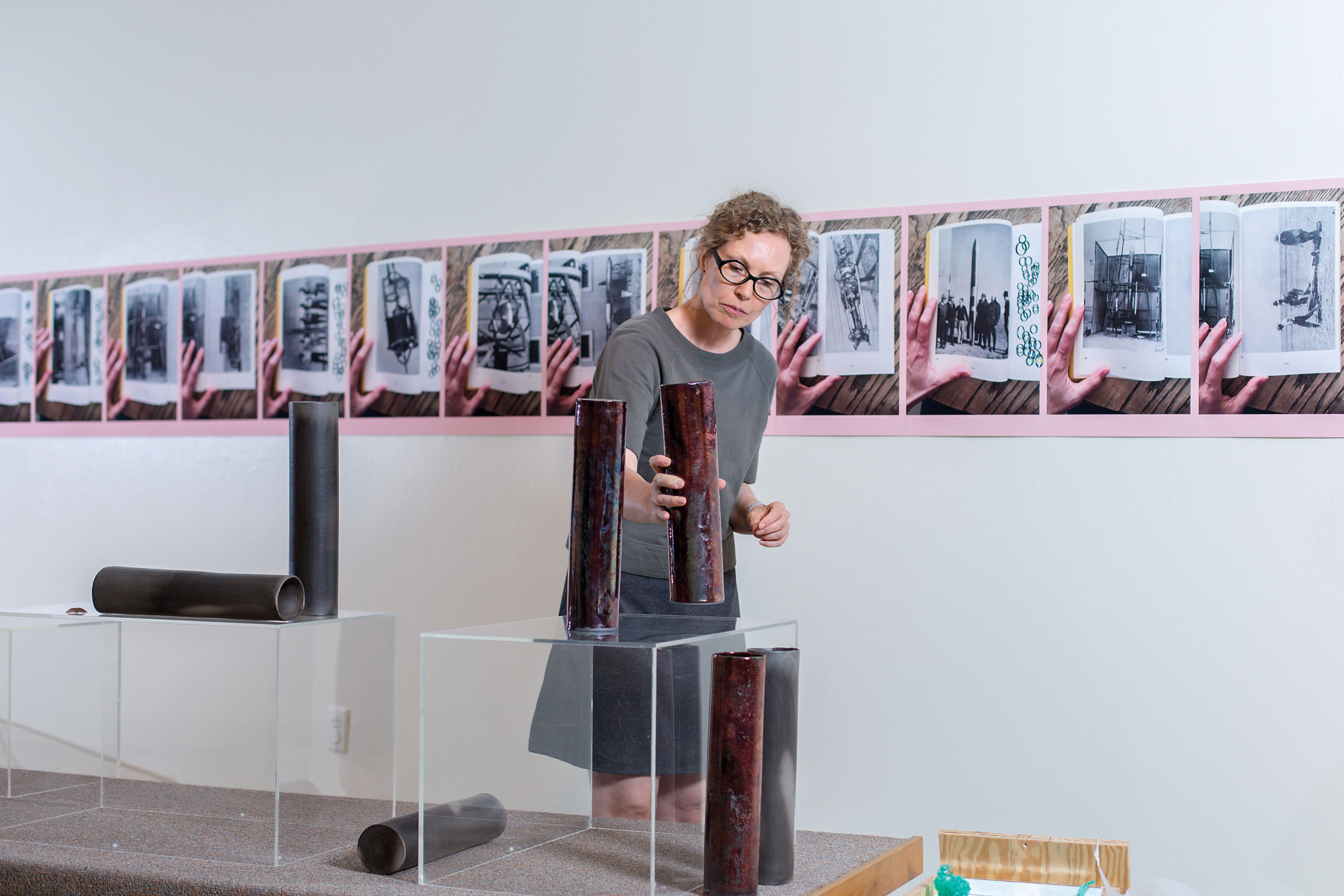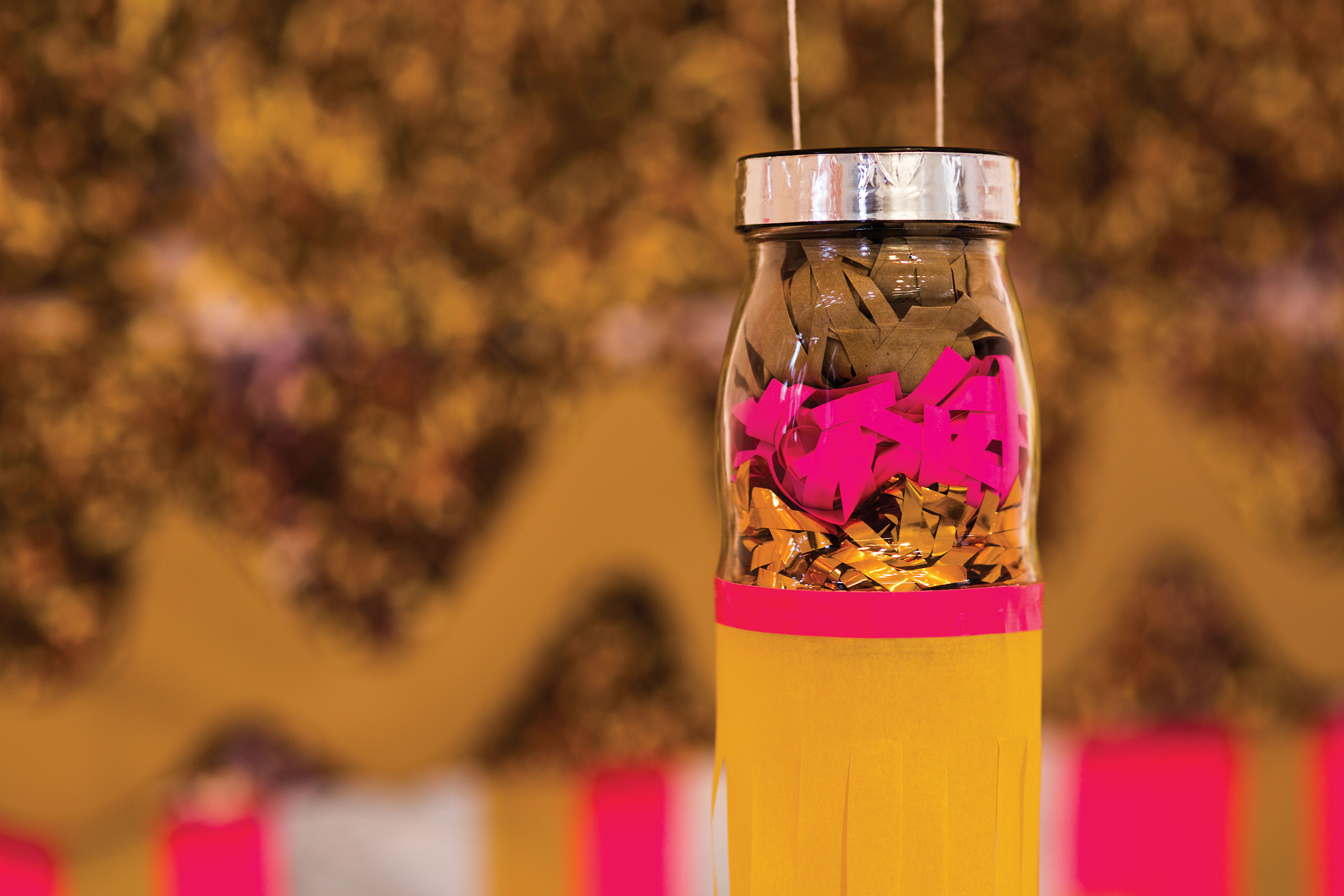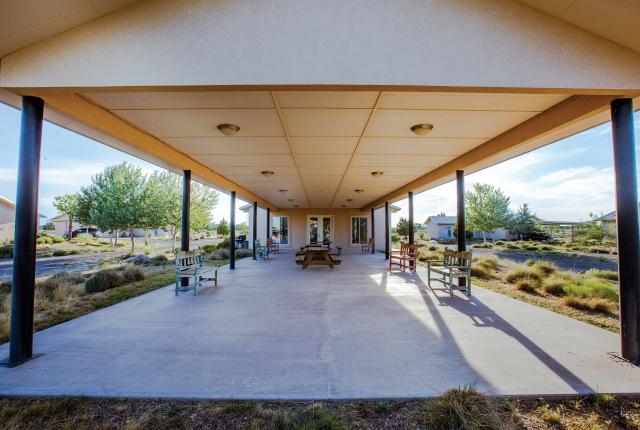Above: The newest residences give artists places to live, work, and gather.
CURIOUS THINGS HAPPEN in Roswell. You can easily ponder why its earliest residents would have bothered to settle there on the western edge of the Llano Estacado—a land so vast and free of formations that, legend has it, Coronado’s men had to pound stakes into the ground to distinguish point A from point B. The region might well have eked it out on ranching and farming alone, but the unlikely discovery of oil thoroughly changed its fortunes. And though an oft-disputed alien encounter may get all the attention, Roswell is also a minor star of the art world, thanks to a Depression-era twist of fate.
Seriously: Some of the best contemporary art of the past half-century sprang from a bit of federal startup money and the benevolence of a local hero in a town of but 48,000 souls. The story started 80 years ago, when architects of WPA programs placed one of the nation’s 100 federal art centers on Roswell’s main drag. Built in classic Pueblo Revival style, it gave paid work to trained artists and nurtured the careers of people like Hondo Valley native Peter Hurd and his wife, Henriette Wyeth. Today it serves as the core gallery of the much-expanded Roswell Museum and Art Center, making it one of only two centers to last the decades. (The other is the South Side Chicago Art Center.)
Thirty years after it opened, Donald B. Anderson, a painter and arts booster who had made his bones in the oil fields, fostered one of the nation’s first artist-in-residence programs. He invited creatives from all across the nation to spend a year on his dime pursuing contemporary art, right there in the remote expanse of the Staked Plains. No strings attached. They could show their work at the Roswell Museum, if they wanted. They could give a workshop, or not. They didn’t even have to prove they had created anything. It was, as Anderson dubbed it, “a gift of time”—albeit in a confounding locale.
“Believe me,” says the program’s director, Stephen Fleming, “when I turned off the interstate and headed down to Roswell the first time, I began to have some suspicions about whether there’d even be a town.”
Fleming, an abstract painter and sculptor, won a residency in the mid-1980s after completing graduate work at the University of California at Davis. “The idea in those days of being at a residency was relatively novel,” he says. “It was almost a rumor that circulated among artists that there was this place you could go.”
Since then, Anderson’s nub of an idea has grown into a national model, filled the 22,000-square-foot Anderson Museum of Contemporary Art, and, this year, won a Governor’s Award for Excellence in the Arts. (Learn about other 2017 winners in “Art and Soul”)
The award gilds a dual-anniversary year set for a collaborative celebration by the Anderson and Roswell museums. On October 6, the Roswell Museum debuts RAiR at 50: Beyond the Gift of Time, featuring the latest works from as many former residents as fit. A weekend’s worth of hands-on workshops and lectures follow an opening-night gala dinner inside the Anderson Museum’s galleries, which already feature more than 450 pieces by residents past and present—people like Luis Jiménez, Elmer Schooley, Howard Cook, Barbara Latham, Frank McCulloch, Kumi Yamashita, Ted Kuykendall, Jerry West, Eddie Dominguez, and Diane Marsh.
 Above: Roswell artist in residence Andrea Jespersen sets up her display at the Roswell Museum.
Above: Roswell artist in residence Andrea Jespersen sets up her display at the Roswell Museum.
“This is a town that can seem as if it’s in a different decade,” says Fleming, who left Roswell for other parts after his residency, returning for good in 1994. “Even though it’s in an area that would seem not conducive to art-making, it’s a place where people have flourished.”
DON ANDERSON IS a 98-year-old dynamo who still actively participates in the program he started. Asked through an assistant whether he had anticipated its growth and longevity, he delivered an emphatic “NO.” Rather, he added, “I am surprised by the size it has become, the number of artists who have participated, and the recognition it has gained over the years.”
Before it even became a program, Anderson offered hospitality to Taos-based artists Cook and Latham, whose advancing years called for warmer winters. As word of the residencies spread, a young Luis Jiménez found his way to Anderson’s driveway, conned his way past the gatekeepers, then persuaded Anderson to check out the gleaming fiberglass sculptures in his pickup truck. Never short on charisma, Jiménez thereupon announced his desire for a residency, and the pair forged a lifelong friendship.
Jiménez’s monumental sculptures bedeck the museum’s galleries, along with planning drafts, prints, and maquettes—32 pieces in all. His apparent joy of not just working, but working there, only deepens the tragedy of his 2006 death, when an under-construction piece in his Hondo studio fell on him.
In the residencies’ early days, Anderson added houses and studios to a farm he owned on Berrendo Road, where he welcomed five artists a year, of all ages and most mediums. Locals called it “Hippie Corner” and would drive past to spy the long-haired East and West Coasters practicing their various crafts. As the city grew closer to the farm, Anderson built six new homes, with even more studios, on more private land four miles away. The originals, though, are still available to former residents and other artists. Given their importance to Roswell’s art legacy, they earned a historical-district designation this year from the State Register of Cultural Properties and are on the glide path to the National Register of Historic Places.
 Above: A detail of a piece by Roswell artist in residence Julie Alpert.
Above: A detail of a piece by Roswell artist in residence Julie Alpert.
The Anderson Museum, set in a building that faintly mimics an Old West storefront, rambles through rooms stuffed with sculp-tures, paintings, photographs, ceramics, and prints that represent both the best and the less memorable trends of modern art’s latest evolutions. “It’s like an adventurous scrapbook of memories of the artists who’ve come here for a residency,” Fleming says. “In oil land, when you’re looking for oil, you drill a hole and take a core sample. If you’re interested in the last 50 years of contemporary art, this is the place to come.”
The residencies began under the auspices of the Roswell Museum and, though the program later split off, the symbiosis has continued. Artists helped beef up the museum’s programs and collections, which also hold some of the state’s greats—Fritz Scholder, Gustave Baumann, Marsden Hartley, and Emil Bittstram. Besides art, the museum has exhibits on regional history and a special wing dedicated to rocketry pioneer Robert H. Goddard, who did his most significant work in Roswell. As part of this year’s commemorations, the museum overhauled its Goddard Planetarium to full digital-dome wowness.
No visit, though, should shave even a minute from the quiet reflections available inside the Founders Gallery, that WPA adobe room with a stylish viga-and-corbel ceiling, its walls hung with the works of Hurd and Wyeth. Surrounded by larger, newer galleries and, just blocks away, the Anderson, it serves as a reminder of the difference that the arts can make in not only the lives of individuals but also an entire town.
Noting that the residency program has received a few National Endowment for the Arts grants to purchase art supplies, Anderson says that the threatened loss of that agency, itself a WPA descendant, “would be a disaster” for many communities. The Artist-in-Residence Program has adequate funding to ensure it lasts, at least for a while, Fleming says. Given its 50-year success story, far removed from major art centers, the program fields queries from other startups that hope to emulate it. Beyond sharing the logistics of management with them, though, Fleming knows the key lies with one man who acted on a bright idea in 1967. “Our advice is always this: Get a Don,” Fleming says. “The Governor’s Arts Award is really his award. We just help Don do what Don’s always done. He’s a hero in this town.”
 Above: Roswell artist in residence Conor Fagan's palette.
Above: Roswell artist in residence Conor Fagan's palette.
A YEAR TO REMEMBER
Participants in the Roswell Artist-in-Residence Program share their thoughts on the experience.
“I was just starting my career as a sculptor. Living in a fourth-story walk-up in New York City proved to be a challenge in getting large-scale works made. At Roswell, I had an incredible amount of room and time to explore new mediums and materials. I bought my first chainsaw at Roswell, and it escorted me into a whole body of life-scale sculptures that I feel are now my central focus.” —Alison Saar, sculptor, Los Angeles (1985–86)
“Having a year’s worth of time and space allowed me to consolidate and investigate, on such a deep level, ideas around identity that are still coming into focus. Not only was the space and time so vital, but the warm and supportive arts community that the residency has cultivated in Roswell has kept me going through the deserts of a creative practice.” —Edie Tsong, conceptual portraitist, Santa Fe (2001–2002)
“RAiR is the best program out there. It changes the lives of the artists who do it, and it changes the community that surrounds it. It is the most generous residency in the country.” —Eddie Dominguez, ceramist, Lincoln, Nebraska (1986–87 and 2002)
“What is given to the artists who have benefited is unquestionably a gift of grace as well. A gift of experiencing the vast expanses of landscape, of Bottomless Lakes and Bitter Lake, the Hondo Valley, the Spanish American, Mexican American, Native American, and ranch cultures. And we in turn have taken this influence back to the many states where we live and work.” —Susana Jacobson, painter, Salt Lake City (1982–83)
“There is something very important about the location of Roswell. Wild open space, freedom to experiment, close to the earth, and the native plants and animals. The harsh climate, the black sky and stars, the mix of cultures, and the sense of important work to be done.” —Mary Josephson, multimedia artist, Portland, Oregon (1999–2000)
JOIN THE PARTY
The Anderson Museum of Contemporary Art is open Monday–Friday, 9 a.m.–4 p.m., and Saturday–Sunday, 1–5 p.m. Free; donations welcome. 409 E. College Blvd.; (575) 623-5600; r roswellamoca.org
The Roswell Museum and Art Center is open Tuesday–Saturday, 9 a.m.–5 p.m., and Sunday, 1–5 p.m. Free; donations welcome. 100 W. 11th St.; (575) 624-6744; roswellmuseum.org
Fiftieth anniversary events for the Roswell Artist-in-Residence Program kick off October 6, which is the 80th anniversary of the Roswell Museum and Art Center. Opening-night activities include an exhibit at the Roswell Museum, RAiR at 50: Beyond the Gift of Time, and a ticketed dinner at the Anderson Museum. roswellmuseum.org; roswellamoca.org
A GIFT OF TIME
More than 200 artists from the United States, Europe, Australia, and Asia have participated in the Roswell Artist-in-Residence Program since its 1967 inception.
How It Works: Artists apply to an independent jury. Mediums include drawing, painting, photography, printmaking, and sculpture. Application details are at rair.org.
Who Wins: Artists at the start of their career, seeking a mid-career change, or even in their legacy years. Talent wins, along with a willingness to embrace the local community.
What You Get: An $800 monthly stipend, plus $100 for each dependent. Furnished housing. Studio space accommodating all disciplines. Opportunities to work with the Roswell Museum and Art Center, plus other local institutions.
Side Benefits: Camaraderie with artists, ranchers, oil-field workers, and the natural world. Bonfires. Stargazing.
The Catch: There isn’t one. You don’t have to produce anything, you don’t have to put on an exhibition. (Although wouldn’t you want to?)


